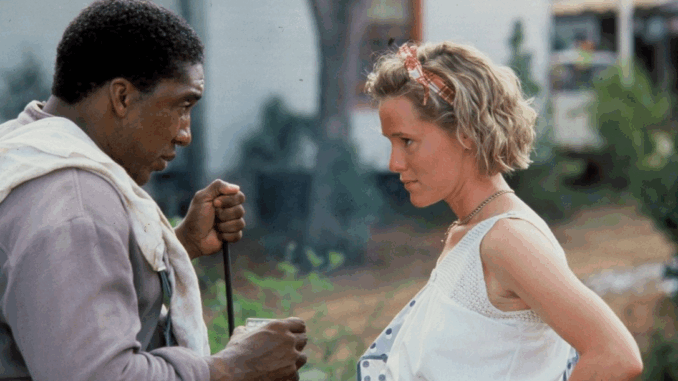
If you’re a fan of Fried Green Tomatoes, you’ve probably seen the major scenes, memorized quotes, and cried at the emotional peaks. But there’s more under the surface—little details, behind-the-scenes choices, and story origins that even hardcore fans often don’t know. These are the moments and facts that deepen the love for this film, that make it richer when you rewatch it. Let’s dig into 11 surprising truths about Fried Green Tomatoes—facts that will make you appreciate the movie even more.
1. Real Beekeeping—and Real Bees
One of the most iconic sequences involves Idgie (Mary Stuart Masterson) harvesting honey among a hive of bees. What many don’t know is that she did the bee scene herself. Her stunt double backed out at the last minute, so Masterson stepped in and worked with real bees during filming.
2. The Whistle Stop Cafe Has Real‐Life Inspirations
The film’s Whistle Stop Cafe isn’t purely fictional. Author Fannie Flagg drew heavily from her great-aunt and a real café in Alabama. That spot inspired the fictional Whistle Stop, and the movie design replicated its Southern charm almost exactly.
3. The Real Whistle Stop Cafe Became a Tourist Spot
Juliette, Georgia stood in for Whistle Stop in the movie. After Fried Green Tomatoes became a hit, locals transformed the set café into a real restaurant where visitors can still enjoy fried green tomatoes today.
4. Change from Book to Film: Friendship vs. Romance
In the original novel, the relationship between Idgie and Ruth leans more romantic. The film, however, focuses on their friendship, leaving romantic interpretations up to the viewer. This subtle shift made the story more universal while keeping its emotional depth.
5. Two Leads Share the Same Birthday
Mary Stuart Masterson (Idgie) and Kathy Bates (Evelyn Couch) share the same birthday, June 28, though Bates is 18 years older. A fun coincidence that added another layer of connection between the two actresses.
6. Evelyn’s Husband’s Counting Mistake
In one scene, Evelyn’s husband messes up a simple count—an easy-to-miss detail that symbolizes Evelyn’s frustration. It subtly shows how she feels unseen and undervalued in her everyday life, even in small moments.
7. Ninny’s Hair Changes Instantly
During Evelyn’s visits to Ninny in the nursing home, Ninny’s hair changes from short lavender to long white with no explanation. It’s a small continuity error, but it adds to the film’s dreamlike storytelling, where time and memory blend together.
8. Film Budget vs. Box Office: Huge Return
Fried Green Tomatoes was made on a modest budget of around $11 million and grossed over $80 million worldwide. For a quiet, character-driven drama, that’s an incredible success story.
9. Not Every Actor Used a Southern Accent
Although the film is set in the Deep South, not all actors used thick Southern accents. Chris O’Donnell, who played Buddy, spoke with a softer tone, contrasting the rest of the cast and making his character feel naturally distinct.
10. Author Fannie Flagg Makes a Cameo
Fannie Flagg, who wrote the novel, makes a quick appearance in the film as a woman leading a self-help group. Her cameo is a wink to fans who know the story’s origins.
11. Fried Green Tomatoes Weren’t Always a Southern Dish
Despite the title, the dish wasn’t originally a Southern staple. It became strongly associated with Southern cooking after the movie’s success, showing how pop culture can reshape food traditions and regional identity.
Why These Facts Matter
These behind-the-scenes facts aren’t just trivia—they deepen the way we see the film.
-
They show how adaptations change storytelling from page to screen.
-
They highlight how small creative choices—like real bees or subtle acting—build authenticity.
-
They reveal how one movie can redefine cultural icons, from a café to a dish.
-
And they remind us that the soul of Fried Green Tomatoes lies in friendship, resilience, and the stories we pass down.
Conclusion
If you love Fried Green Tomatoes, these hidden gems add a new layer of appreciation. Knowing that Idgie braved real bees or that the café still stands in Georgia makes the story come alive. The film isn’t just about food, friendship, or memory—it’s about how small acts of courage and kindness can ripple through time. Next time you rewatch it, notice the little things—they’re what make Fried Green Tomatoes timeless.
